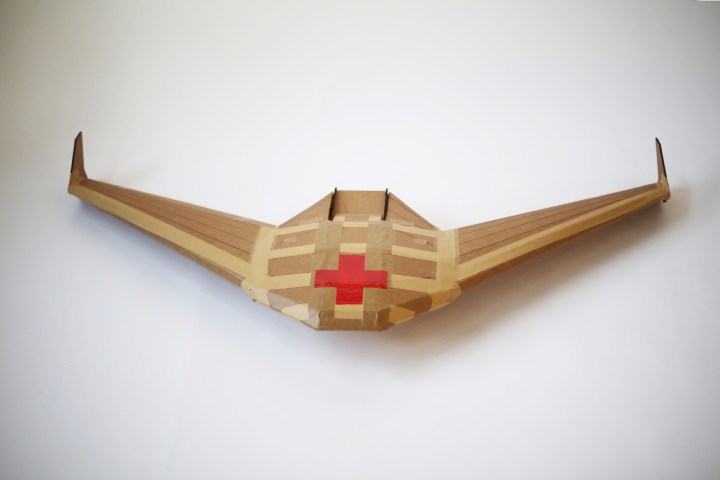
ICARUS (that’s Inbound Controlled Air-Releasable Unrecoverable Systems), as it’s called, is a disposable drone that’s purposely designed to fly out on missions that there’s no coming back from.
As the “A” in its acronym suggests, ICARUS is designed to be released in mid-air by a larger aircraft. The goal is then to deliver supplies to their destination, where the drone body will then safely biodegrade. It’s able to do this because the UAV flies like a glider, with no built-in motor. Its only (presumably non-compostable) electronic components are a mini computer and sensors, which control where it travels and ultimately lands.
“There are two use cases that make the most sense: delivering humanitarian payloads to remote areas lacking suitable road infrastructure, or in cases where it’s worth minimizing human exposure, transporting blood, vaccines, and other medical supplies,” Otherlab engineer Star Simpson told Digital Trends. “Alternately, [these vehicles] may also enable the delivery of other equipment, such as batteries, to specific locations. We enable distributed delivery with precise landings, solving the ‘last leg’ problem for battlefield or low-infrastructure locations, and also reduce supply chain vulnerability in those cases.”
The project is the realization of a piece of DARPA research, from whom the funding for the work came. The biodegradable part of the project isn’t just about sustainability, either. It builds on an earlier DARPA project called Vanishing Programmable Resources (VAPR), intended to create self-destructing electronic devices able to stop high-tech military equipment falling into enemy hands.
That’s not to say it won’t one day be available to the likes of you or I in some form, however. “We are looking for commercial partnerships to bring this technology to the market,” Simpson said.


